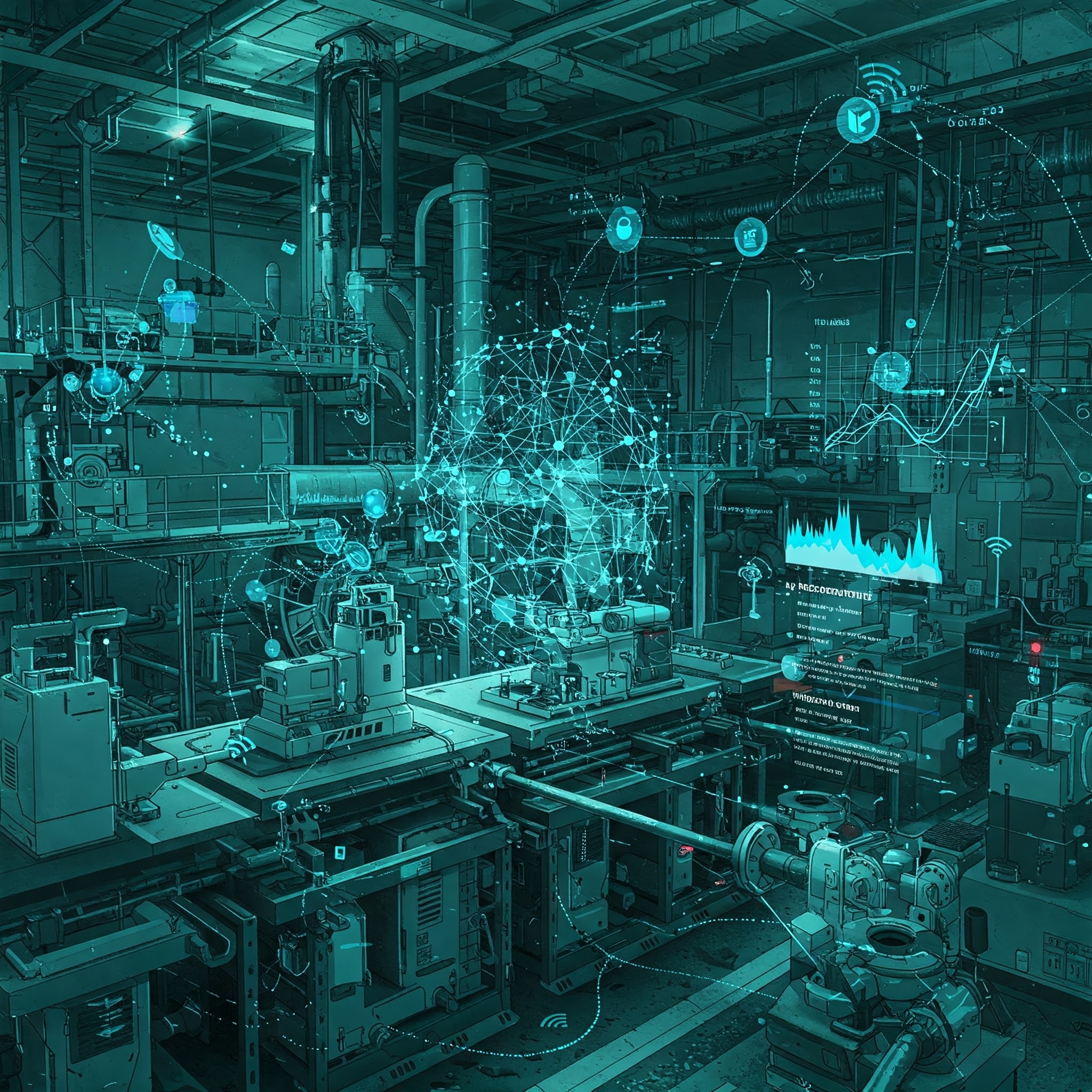In multiple discussions, we explored the mindset and skill set needed to unlock the true potential of the Internet of Things (IoT). These elements lay a strong foundation for success. However, when it comes to actual development and implementation, understanding the core building blocks of an IoT-enabled solution is just as crucial.
By structuring your solution around these key components, you can create a more robust and scalable reference architecture. This best-practice approach ensures that your application meets the specific needs of each layer—ultimately delivering greater value to end users.
In this blog, we’ll outline the four fundamental steps of an end-to-end IoT solution and illustrate how to implement them using real-world technology.
Challenges & Requirements
Recently, we worked on a project aimed at measuring cycle time across a production line as part of broader Key Performance Indicators (KPIs). The goal was to present data in a way that allows users to detect trends and take actionable steps based on insights.
However, the production line relied on legacy controllers with limited communication capabilities—only supporting vendor-developed protocols. Without storage or visualization tools, valuable KPI data remained untapped, missing out on its true potential to optimize processes, improve performance, and drive innovation.
So how do we transform raw production data into meaningful business intelligence?
The Four Essential Steps of an IoT Solution
1. Sense and Collect Data
At the core of any IoT solution are smart devices—sensors, actuators, and embedded systems that generate critical data for analysis. Unfortunately, only a small fraction of industrial data is currently collected and used effectively, often due to vendor-specific protocols, security concerns, and lack of integration frameworks.
In our project, each station in the production line was equipped with PLC-controlled sensors and actuators. To extract real-time data, we developed logic that enabled controllers to capture and relay state changes while maintaining secure communication via industrial Ethernet protocols.
To standardize connectivity across various vendors, we integrated KepServerEX as an OPC UA server—upgrading proprietary protocols to an industry-standard interface that ensures interoperability, security, and flexible data exchange.
2. Apply Logic
IoT solutions must bridge the gap between industrial networks and modern cloud-enabled architectures. A gateway plays a critical role in this transformation by forwarding data to backend systems while handling protocol conversions, encryption, and validation.
For this project, we utilized an in-house gateway application to convert OPC UA data into secure HTTP/S transmissions with JSON formatting—eliminating unnecessary metadata while ensuring efficient, scalable data flow.
3. Store Data
Data is the backbone of IoT insights, yet poor database selection can hinder its usability. Many projects default to traditional relational databases even when unstructured, time-series data is a better fit.
In our solution, collected data was transmitted securely via an API layer, ensuring controlled access while supporting third-party integrations. We opted for a NoSQL database tailored for time-series data, allowing us to scale efficiently while maintaining security via user credentials and TLS encryption.
4. Compute and Create Insights
Raw data alone doesn’t drive business transformation—actionable insights do. IoT solutions must go beyond collection and storage to provide meaningful analytics and visualization tools for end users.
In our implementation, processed data was presented through interactive web dashboards, empowering technicians to receive real-time alerts and enabling engineers to identify patterns that drive operational efficiency. From predictive maintenance to trend forecasting, our IoT framework helped optimize performance across the production line.
Final Thoughts
IoT isn’t a one-size-fits-all solution—it’s a powerful enabler of digital transformation when implemented strategically. By following this four-step approach, businesses can unlock new efficiencies, enhance decision-making, and create lasting value through data-driven insights.
Let’s build the future of IoT, together! Contact with us.

